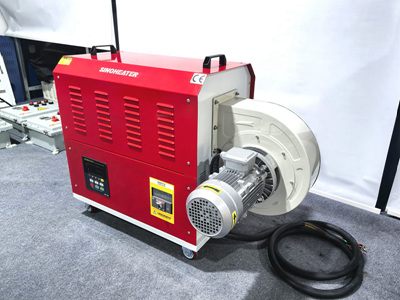Understanding Noise Control in Portable Heaters: Key Factors for Informed Purchasing Decisions
Selecting a portable heater with effective noise management involves evaluating how sound levels align with usage environments and personal preferences. Excessive noise can disrupt sleep, work, or conversations, making this feature critical for comfort. Below, we explore essential considerations for minimizing heater-related disturbances.
Decibel Ratings and Real-World Impact
Interpreting Noise Level Specifications
Manufacturers often list decibel (dB) ratings to indicate operational volume. For context, a whisper measures around 30 dB, while normal conversation hovers near 60 dB. Prioritize heaters with ratings below 45 dB for bedrooms or offices, as these levels are unlikely to interrupt sleep or focus. Models exceeding 55 dB may be suitable only for garages or workshops where noise is less disruptive.
Contextualizing dB Measurements
Noise perception varies based on distance and background sounds. A heater rated at 40 dB in a quiet room may seem louder in a bustling household. Consider testing units in-store or reading user reviews to gauge real-world performance, as lab measurements might not reflect everyday conditions.
Dynamic Noise Adjustment Features
Some heaters offer adaptive noise control, lowering fan speed as the room reaches the desired temperature. This reduces volume during sustained operation, making them ideal for overnight use. Look for models with eco or sleep modes that prioritize quiet performance without sacrificing warmth.
Design Elements That Influence Sound Output
Motor and Fan Technology
Brushless motors produce less friction and vibration compared to traditional designs, significantly reducing humming or rattling noises. Additionally, aerodynamically shaped fan blades minimize air turbulence, which is a common source of operational sound. Heaters with enclosed motor housings further dampen vibrations, enhancing overall quietness.
Structural Insulation and Vibration Dampening
Materials like rubber mounts or foam padding within the heater’s casing absorb vibrations before they generate noise. Thick plastic or metal exteriors also prevent sound from escaping, creating a quieter user experience. During selection, check for heaters with reinforced frames or sound-dampening layers, especially for high-power models.
Airflow Optimization
Straight, unobstructed air ducts reduce resistance, allowing fans to operate at lower speeds while maintaining efficiency. Avoid heaters with narrow grilles or sharp bends in the airflow path, as these can create whistling or whooshing sounds. Oscillating models should feature smooth rotation mechanisms to prevent grinding noises during movement.
Matching Noise Levels to Usage Scenarios
Quiet Environments: Bedrooms and Study Areas
For spaces requiring minimal disruption, prioritize heaters with ultra-quiet operation, such as infrared or oil-filled radiators, which lack moving fans. If fan-based heating is necessary, choose models with nighttime settings that limit speed and disable oscillations. Some advanced units use white noise technology to mask residual sounds, creating a soothing background hum.
Moderate-Noise Tolerance: Living Rooms and Kitchens
In shared areas, a heater producing up to 50 dB is often acceptable, especially if positioned away from seating zones. Look for features like adjustable fan speeds to balance warmth and noise based on occupancy. Ducted heaters that direct airflow upward or downward can also reduce perceived loudness by minimizing direct air movement at ear level.
High-Noise Tolerance: Workshops and Garages
Industrial or utility spaces can accommodate louder heaters, but efficiency remains important. Opt for models with variable-speed fans that allow users to increase airflow for rapid heating without prolonged high-volume operation. Heaters with external thermostats enable temperature control from a distance, reducing the need to adjust settings manually near the unit.
Advanced Noise Reduction Technologies
Active Noise Cancellation (ANC) Prototypes
While rare in consumer heaters, experimental ANC systems use microphones to detect and counteract fan noise with opposing sound waves. This technology, borrowed from headphones, could redefine quiet heating in the future. For now, focus on passive noise-reduction features like those mentioned above.
Smart Sensor Integration
Some modern heaters include occupancy sensors that lower fan speed when no one is present, reducing noise during idle periods. Others use ambient noise detection to adjust operation quietly in shared environments, such as open-plan offices. These intelligent features enhance comfort without requiring constant manual adjustments.
By prioritizing decibel ratings, design quality, and usage context, buyers can select a portable heater that delivers warmth without unnecessary noise. Whether creating a peaceful bedroom or maintaining productivity in a home office, the right balance of sound and performance ensures a comfortable, distraction-free environment.



